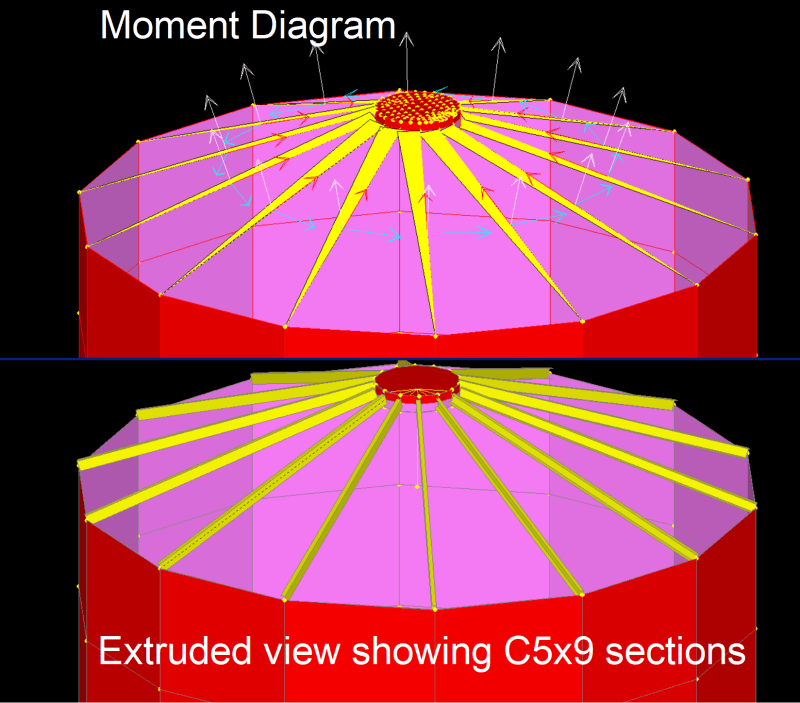I modeled a tank roof using the SAP2000 software. The roof plates were modeled as loads (not actual shells) and after running the analysis I found the model would only be stable if the rafters have one of their ends not released (logical) but I am not sure if it is the crown ring side that need to remain fixed.
I remember reading somewhere than rafters are pinned where they meet the shell, and "free to slide by guided" in the center. This is surprising, and I think I have missed something.
I modeled the crown ring as a curved plate of 0.5 mm thickness, height 20 cm with a top plate and a bottom plate of same thickness.

I remember reading somewhere than rafters are pinned where they meet the shell, and "free to slide by guided" in the center. This is surprising, and I think I have missed something.
I modeled the crown ring as a curved plate of 0.5 mm thickness, height 20 cm with a top plate and a bottom plate of same thickness.

